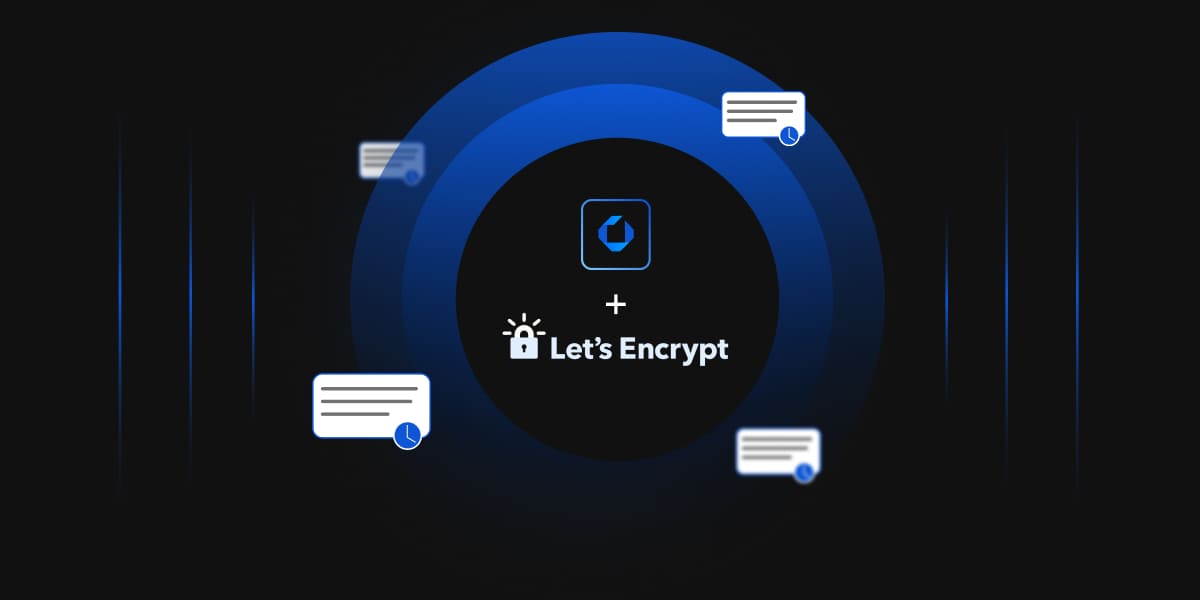- The World Is Changing, So Should Your Certificate Strategy
- The OCSP Problems Organizations Often Miss
- OCSP Stapling Shifts the Control Back Into Your Hands
- A Healthcare Client’s Reality Check
- Latest 2025 Compliance Orders You Need to be Aware Of
- How Encryption Consulting Takes Your Security Way Beyond Just Stapling
- Conclusion
It was a Friday afternoon when the call came in. A large financial services client we had been supporting for over a year was seeing sporadic TLS handshake failures across several of their critical customer portals. No changes had been made to their infrastructure. The certificates were valid, the servers were healthy, and yet thousands of clients were intermittently seeing security warnings. Their teams were scrambling, but the issue wasn’t local. It was external.
So who was the culprit?
A regional OCSP (Online Certificate Status Protocol) responder run by their certificate authority was having a DDoS scenario.
This crisis is like a horror we see too many times. And in today’s tightening world of shrinking certificate lifespans, it’s becoming a far too common one.
The World Is Changing, So Should Your Certificate Strategy
At Encryption Consulting, we’ve worked with organizations across industries – banks, healthcare networks, energy providers, federal agencies, and one trend keeps surfacing again and again: Certificate lifespans are getting shorter; operational pressure is getting higher.
Since late 2023, with Google’s push to reduce public TLS certificates to 90 days, we’ve helped many enterprises rethink how they approach certificate lifecycle management (CLM). Shorter lifespans reduce the window of compromise if a private key is exposed, but they amplify operational friction.
- Renewals become quarterly events, not annual.
- Automated issuance pipelines must be bulletproof.
- Revocation status checking moves from a back-office hygiene task to a front-line risk factor.
This is where OCSP stapling quietly becomes one of the most underappreciated, yet essential, pieces of modern PKI architecture.
The OCSP Problems Organizations Often Miss
Let’s take a step back and look at the certificate lifecycle overview. Every certificate your organization issues comes with one lingering question every time it’s used:
“Is this certificate still valid?”
OCSP was introduced to answer that question in real time. Every time a client initiates a secure connection, it reaches out to the CA’s OCSP server to confirm that the certificate hasn’t been revoked. On paper, this sounds robust.
But in practice, as we’ve seen too many times:
- If the CA’s OCSP server is slow or down, your customers experience delays or outright failures.
- Every OCSP query reveals client metadata to external servers, raising privacy flags under HIPAA, GDPR, and others.
- As certificate renewal frequency increases (thanks to shorter lifespans), OCSP traffic scales exponentially.
For one global e-commerce platform we recently supported, moving to 90-day certificates increased their OCSP query volume by nearly 400% overnight. Without a mitigation strategy, their CDN costs and handshake times would have skyrocketed.
OCSP Stapling Shifts the Control Back Into Your Hands
That’s why we consistently recommend OCSP stapling as a first-line defense.
With stapling:
- The server takes charge. It periodically fetches the OCSP response directly from the CA and “staples” it into every TLS handshake.
- The client no longer needs to query the CA directly. Everything it needs to verify revocation status is already presented during the handshake.
- Privacy improves. No more revealing browsing behavior to third-party OCSP responders.
- Performance improves. No more waiting for external OCSP servers to respond.
It sounds simple, and technically, it is. But operationalizing this across diverse infrastructure is where most organizations stumble. That’s where our real work begins.
A Healthcare Client’s Reality Check
One of the most illuminating examples came from our work with a healthcare client last year. As part of HIPAA audits, regulators flagged an unexpected risk: patients accessing their portal from personal devices inadvertently revealed session metadata to external OCSP servers.
The audit findings were clear:
Even seemingly harmless OCSP queries counted as unnecessary third-party exposure of protected health information (PHI).
Working with their security, compliance, and infrastructure teams, we designed a phased rollout of OCSP stapling across their entire web-facing infrastructure. The result:
- OCSP traffic dropped by 96%.
- TLS handshakes became more resilient.
- Audit flags were cleared.
- Privacy exposure risks were closed.
What started as a minor audit finding quickly became a flagship internal security improvement story. And frankly, these stories are becoming more common with every quarter.
Latest 2025 Compliance Orders You Need to be Aware Of
We’re not operating in a vacuum. Here’s the reality facing CISOs and IT leaders today:
- PCI DSS 4.0 mandates tighter revocation and certificate management controls.
- HIPAA audits are increasingly scrutinizing even indirect data exposures like external OCSP callouts.
- The EU’s NIS2 directive and financial sector-focused DORA 2025 introduce harsher penalties for operational disruptions, making dependency on fragile OCSP infrastructures a regulatory liability.
- Google’s 90-day certificate policy shift, already influencing industry behavior, is just the tip of the iceberg. Shorter lifespans are becoming de facto across private PKI as well.
In this environment, OCSP stapling isn’t an “optimization.” It’s a risk management control.
How Encryption Consulting Takes Your Security Way Beyond Just Stapling
When we engage with organizations on certificate management, OCSP stapling is rarely a standalone project. It fits into a larger modernization journey that typically includes:
- Deploying fully automated certificate issuance pipelines
- Designing high-availability internal OCSP responder architectures (for private PKI)
- Hardening revocation infrastructure against DDoS and service disruption risks
- Integrating real-time CLM monitoring into security operations dashboards
- Aligning architecture with both Zero Trust models and compliance audit expectations
What’s most rewarding for us, as trusted experts in applied cryptography, is transforming our clients’ certificate management from a fragile, reactive burden into a resilient, automated trust infrastructure that silently powers their security, compliance, and business continuity, no matter how complex the environment becomes.
Conclusion
Certificate management is fundamentally about trust. And trust breaks down fastest when revocation checking becomes a point of failure.
OCSP stapling doesn’t just make things faster. It gives you back control over performance, privacy, compliance, and operational uptime.
As of June 2025, where certificates live for 90 days but revocation status needs to be validated in real time, control is your greatest asset.
If your organization isn’t yet stapling certificates, or even worse, doesn’t know who’s responsible for revocation operations, you may be one OCSP outage away from your next incident.
At Encryption Consulting, we don’t just advise on your security improvements. We help you build, automate, and harden your certificate ecosystem, end-to-end. We’ve helped dozens of organizations avoid that call. If this security challenge resonates with you, let’s talk.
- The World Is Changing, So Should Your Certificate Strategy
- The OCSP Problems Organizations Often Miss
- OCSP Stapling Shifts the Control Back Into Your Hands
- A Healthcare Client’s Reality Check
- Latest 2025 Compliance Orders You Need to be Aware Of
- How Encryption Consulting Takes Your Security Way Beyond Just Stapling
- Conclusion




